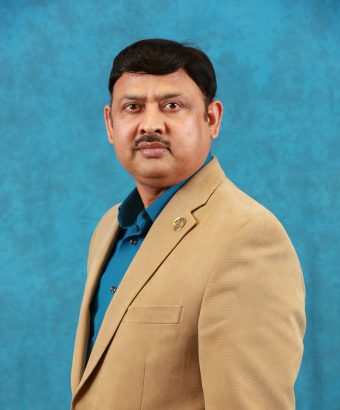All FVSU offices are closed on Thursday, December 24, through Thursday, January 1 for the winter holidays.
Hari Singh, Ph.D.
Associate Professor

FVSU Main Number: 478-827-FVSU
College of Agriculture, Family Sciences and Technology

Hari Singh, Ph.D.
Associate Professor
College of Agriculture, Family Sciences and Technology
University DirectoryDR. HARI P. SINGH
Research Professional, Biotechnology Graduate Program Coordinator
1005 State University Drive
157 Houston Stallworth building
Fort Valley, GA 31030
Phone: 478.822.1077
Fax: 478.825.6376
Email:singhh@fvsu.edu
EDUCATION
Doctor of Philosophy: Agriculture (Crop Physiology)
Narendra Deva University of Agriculture and Technology, Faizabad, India
Master of Science: Botany (Plant Physiology)
Maharshi Dayanand Saraswati University, Ajmer, India
Bachelor of Science: Biology
Maharshi Dayanand Saraswati University, Ajmer, India
PROFESSIONAL EXPERIENCE
Adjunct Professor of Biology
Fort Valley State University
Postdoctoral Research Associate
Plant Genome Mapping Laboratory, Center for Applied Genetic Technologies, University of Georgia
Associate Professor
Department of Plant Molecular Biology and Genetic Engineering, Narendra Deva University of Agriculture and Technology, Faizabad, India
Assistant Professor
Narendra Deva University of Agriculture and Technology, Faizabad, India
Senior Research Associate
Narendra Deva University of Agriculture and Technology, Faizabad, India
Postdoctoral Research Associate
University of Bristol, United Kingdom
RESEARCH INTERESTS
Current research at our Bioenergy Lab focuses on developing sustainable production systems on marginal land for high cellulosic biomass and sugar yielding feedstocks. Increasing fossil fuel cost, reduced supply, dependence on foreign oil, increasing greenhouse gas emissions, depleting soil profiles necessitates the need of such a sustainable production system. We are studying crops like Napiergrass (Pennisetum purpureum), Energycane (Saccharum officinarum L.), Sorghum (Sorghum bicolor L. Moench), Clover (Trifolium incarnatum L.), vetch (Vicia villosa Roth) and annual rye (Secale cereale L.). Our emphasis is on developing and analyzing low-input production methods for napiergrass and energycane, measuring carbon and N sequestration in the soil and plant, measuring emission of N2O from different cropping systems, and developing comprehensive life cycle assessment models to quantify the economic and environmental benefits of bioenergy crop production systems.
Our research findings will enable farmers to improve their income by producing income generating biofuel crops on the marginal lands and guide growers on the most promising and sustainable biomass crops, production, and handling systems for southern United States.
PUBLICATIONS
- H.P. Singh & B.P. Singh. 2010. Natural rubber. In: B.P. Singh (ed.) Industrial Crops and Uses, CABI, Wallingford, U.K, pp. 358-386
- K. Takamizawa, W. Anderson & H.P. Singh. 2010. Ethanol from lignocellulosic crops. In: B.P. Singh (Ed.) Industrial Crops and Uses. CABI, Wallingford, U.K., pp. 104-139.
- H.P. Singh, H.K.N. Vasanthaiah, M.N. Rao, J.R. Soneji, B. Singh, H.C. Lohithaswa & C. Kole (2009). Molecular mapping and breeding for quality. In: C Kole and AG Abbott (Eds.) Principles and Practices of Plant Genomics. Volume 2: Molecular Breeding. Science Publishers, New Hampshire, Jersey, Plymouth, pp 103-142.
- H.P. Singh, Seema Dhir & S.K. Dhir (2008). Stevia, in Kole, C. and Hall, T. C. (eds.), Compendium of Transgenic Crop Plants: Transgenic Sugar, Tuber and Fiber Crops, Blackwell Publishing, Oxford, UK, pp 97-116.
- H. C. Lohithaswa, F. A. Feltus, H. P. Singh, C. D. Bacon, C. D. Bailey, A. H. Paterson (2007). Leveraging the rice genome sequence for monocot comparative and translational genomics. Theor. Appl. Genet. 115:237–243
- H.P. Singh, Lohithaswa HC (2006) Sorghum. In: Kole C (Ed) Genome Mapping & Molecular Breeding in Plants. Springer- Verlag Berlin, Heidelberg, pp 257-302.
- F.A. Feltus/H.P. Singh, H.C. Lohithaswa, S.R. Schulze, T. Silva, and A.H. Paterson (2006). A comparative genomics mechanism for sampling diversity and conservation in orphan crops. Plant Physiology 140: 1183-1191.